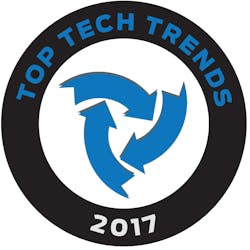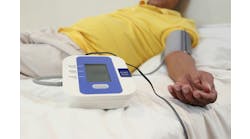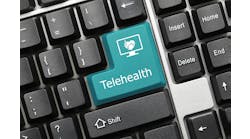At the HIMSS17 Conference and Exhibition in Orlando last month, cognitive computing emerged as a central theme, and the buzz around that topic started the first day. In the opening keynote address at HIMSS17, IBM global CEO Ginni Rometty told attendees that cognitive computing could lead to a “golden age” in U.S. and global healthcare.
As Healthcare Informatics Editor-in-Chief Mark Hagland noted in his article about her keynote address, speaking of this moment, when cognitive computing is advancing rapidly in healthcare, Rometty said, “I hope to persuade you of three things. First, it is real, it is here, and it is mainstream, and it can change healthcare. I think we’re going to make three key architecture decisions in the next two to three years, that will change the world, and healthcare will change more than any other industry,” she said. “And cognitive computing could usher in a new golden age in healthcare, if it is shaped wisely.”
In fact, industry analyst firm IDC predicts that 30 percent of providers will use cognitive analytics with patient data by 2018. There has been rapid growth in the use of machine learning in applications for imaging and diagnostics in which deep learning algorithms are used for pattern recognition and to assist physicians with treatment decisions.
Greg McGovern, principal at The Chartis Group, a Chicago-based healthcare consulting firm, points out that machine learning has a long history in healthcare, including computer-assisted diagnosis in radiological imaging going back to the 1970s. “What’s different about it now? I think we see a broadening of the use case applications,” he says, noting the introduction of cloud, big data, and pattern recognition, as well as what he calls “triage-type tools and self-triage tools.” “You get all sorts of sexy, but effective applications, like computer-assisted diagnoses. Folks are offering tools on their websites for customers to triage, so you can get early alerting based on biomarkers, or social metrics, or other statistical risk-based data,” he says.
Greg McGovern
There are also fundamental applications of AI and machine learning to traditional processes, he notes. “We’ve had clinical documentation and assisted coding for some time, but those have gotten to the maturity level where they are trusted by individuals using them and are being used to offset a lot of the day-to-day tasks that, in the case of clinical documentation, physicians don’t like to do. On the revenue cycle side as well, those standard utility tasks that are fairly formulaic are now being replaced or being made more efficient by the introduction of machine learning into those work streams,” McGovern says.
Pioneering health systems are already turning to machine learning, a discipline within the field of artificial intelligence (AI) and cognitive systems, in order to leverage advanced analytics to derive new insights from data sets with the goal of improving diagnostics and better predicting outcomes.
The St. Louis-based Mercy Health system, a 45-hospital group and a co-second-place winner in Healthcare Informatics 2017 Innovator Awards program, turned to a machine learning application to help it identify hidden patterns in its own data to bolster its care pathways process. Working with Ayasdi, a machine intelligence software company, Mercy Health leaders found that an original care pathway developed manually at Mercy reduced the cost of total knee replacements by 7 percent. But the machine-learning approach cut an additional 5 percent off the cost of knee replacement, while improving or maintaining low rates of mortality and morbidity across all cases.
The Salt Lake City-based Intermountain Healthcare, a 22-hospital integrated health system, is one year into its deployment of Ayasdi’s clinical variation management application with the goal of accelerating the insights the health system is able to gain from its data set. Ayasdi’s application leverages machine learning and topological data analysis to extract meaningful insights from billions of data points.
Lee Pierce, chief data officer at Intermountain, says the technology tool has been applied, so far, to about five use cases, and is yielding significant insights. For one project, clinical teams were researching the health system’s appendicitis care process model. According to Pierce, by using the machine learning-driven application, researchers discovered a significant cost variation at one hospital driven by the use of a substantially more expensive antibiotic, which also produces a measurably reduced quality outcome. “So higher cost and reduced quality, in this case, at one hospital. As we dug into the data, it was one particular antibiotic. So the use of the antibiotic is being changed in the organization now, based on that analysis, to lower the cost and to increase our effectiveness of medication use for appendicitis patients. So, we’re at that point, where we know the insight, and our surgical services clinical program is getting ready now to roll that insight across Intermountain for improving appendicitis,” he says.
Now that the insights have been derived, Pierce says the challenge is putting those insights into consistent practice across the organization. “The process of how that gets rolled out is through coordination with the teams that have accountability for those care processes, and that’s embedded within our clinical program model at Intermountain,” he says.
Lee Pierce
What’s more, Intermountain Healthcare leaders are setting their sights beyond clinical variation. “We believe the machine learning engine can be used to solve all kinds of analytical questions and derive insights from all different kinds of use cases. I believe it can be used in our population health management area.” And, he adds, “We have a data science lab that we started where we are taking the ideas in, filter those and see what drops out, and they are not just clinical quality improvement, they’re also operational improvement and other areas of the organization.”
McGovern believes machine learning will become more widespread in the next two years, and, moving forward, one key question will be how this technology will be incorporated at the point of care and into providers’ workflows. “How are the large electronic health record (EHR) vendors and other people providing the primary documentation systems, and how are they going to incorporate that analytics process into those tools? And how are they going to incorporate that analytics process so that the tools are displayed at the point of care and effectively used by the clinicians, rather than a separate decision management system on the side?”
So far, machine learning has been leveraged by large and academic health systems with highly skilled data scientists—Intermountain has a team of 150 data analysts—and with dedicated teams to turn their data into meaningful performance improvements. What are the implications for smaller and freestanding hospital organizations? In an effort to make machine learning actionable for healthcare organizations of all sizes and types, Health Catalyst, a Salt Lake City-based data analytics company, launched healthcare.ai, an online, open-source repository of machine learning tools and education. The company also is embedding machine learning as a core capability across its entire product line.
Moving forward, while it’s undisputed that machine learning will continue to have an impact on healthcare, McGovern says it’s important for healthcare organization leaders to consider innovation versus applicability, with a focus on how the technology applies to the organization’s business model and current business plan. “Just remind yourself, ‘Don’t just look at the shiny, new objects, but why are people using this and why are people developing this?’”
He continues, “Look at ‘What’s being developed? Where are these technologies going? What’s the use cases that these technologies are being evolved around?’ It’s got to be use case-based. It might be a great idea, but maybe not applicable to my integrated delivery network in mid-state Iowa right now.” He adds, “Secondly, engage your core vendors. Ask them, ‘How do you see the market evolving? How are you thinking of incorporating certain types of functionality into your core product that we have invested so much time and money into?’ We need to make sure, as a group, that we’re all pushing our current vendors to embrace the technology where it’s applicable.”
Machine learning and cognitive computing is an evolving market, and in three or four years, most healthcare organizations will be using it, McGovern says. “We’re at the beginning, and you need to stay current with it. But, it gets back to, ‘What’s the applicability to the organization that I am responsible for right now?’”




